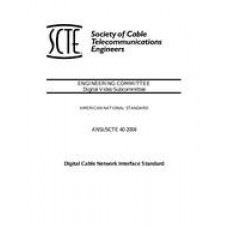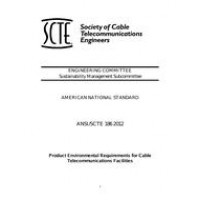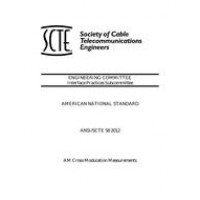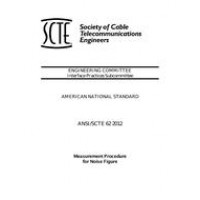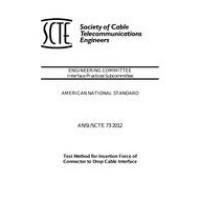SCTE 40 2004
- Digital Cable Network Interface Standard
- standard by Society of Cable Telecommunication Engineers, 01/01/
- Category: SCTE
$50.00
$25.00
- Two-way transmission.
- The maximum optical/electrical spacing between the cable headend and the most distantdeployed terminal equipment is 100 miles, although typical maximum separation may be10-15 miles.
- A maximum differential optical/electrical spacing between the cable headend and the closestand most distant deployed terminal equipment is 100 miles, although this would typically belimited to 15 miles.
The cable network provides services utilizing 6-MHz in-band channel(s), out-of-band forwarddata channel(s), and out-of-band reverse data channel(s). The 6-MHz in-band channels are usedto transport digital services as well as analog services. These services may be either in the clearor scrambled.
A typical channel plan for a cable network places analog services (NTSC AM-VSB channels) inthe 54 to 450/550 MHz range; and digital services (QAM MPEG-2 multiplex channels) in the450/550 to 864 MHz range (Note 1). These channels shall all comply with the EIA/CEA-542-Achannel-tuning plan. However, the frequency location may change over time such that analogand digital channels may be located anywhere in the downstream operating range.
 PDF
PDF
All of our standards document are available in PDF (Portable Document Format), an electronic, downloadable format.You will be able to download the file in your account downloads.
 Multi-User Access
Multi-User Access
After purchasing, you have the ability to assign each license to a specific user.
 Printable
Printable
At any time, you are permitted to make printed copies for your and your members' reference use.

